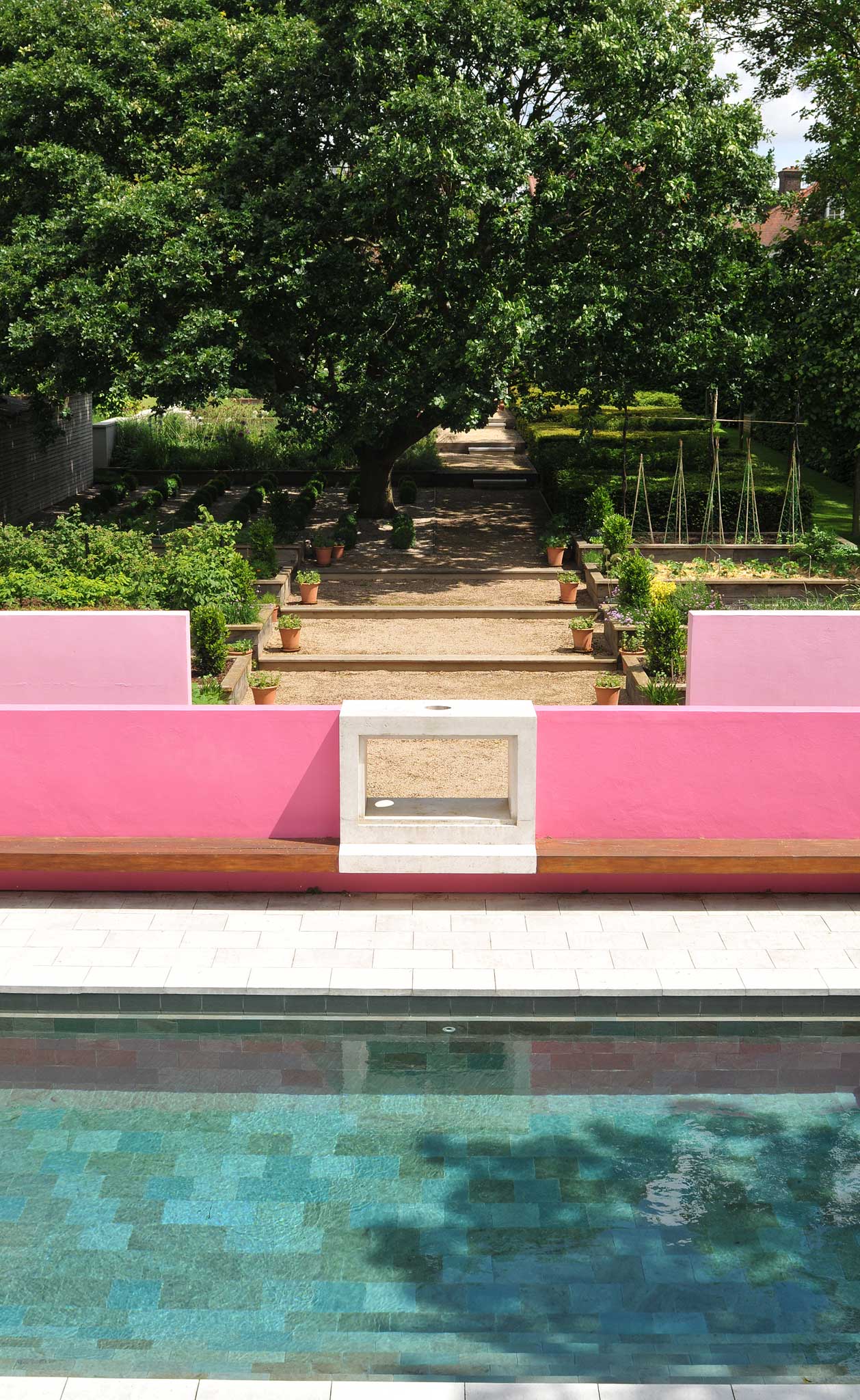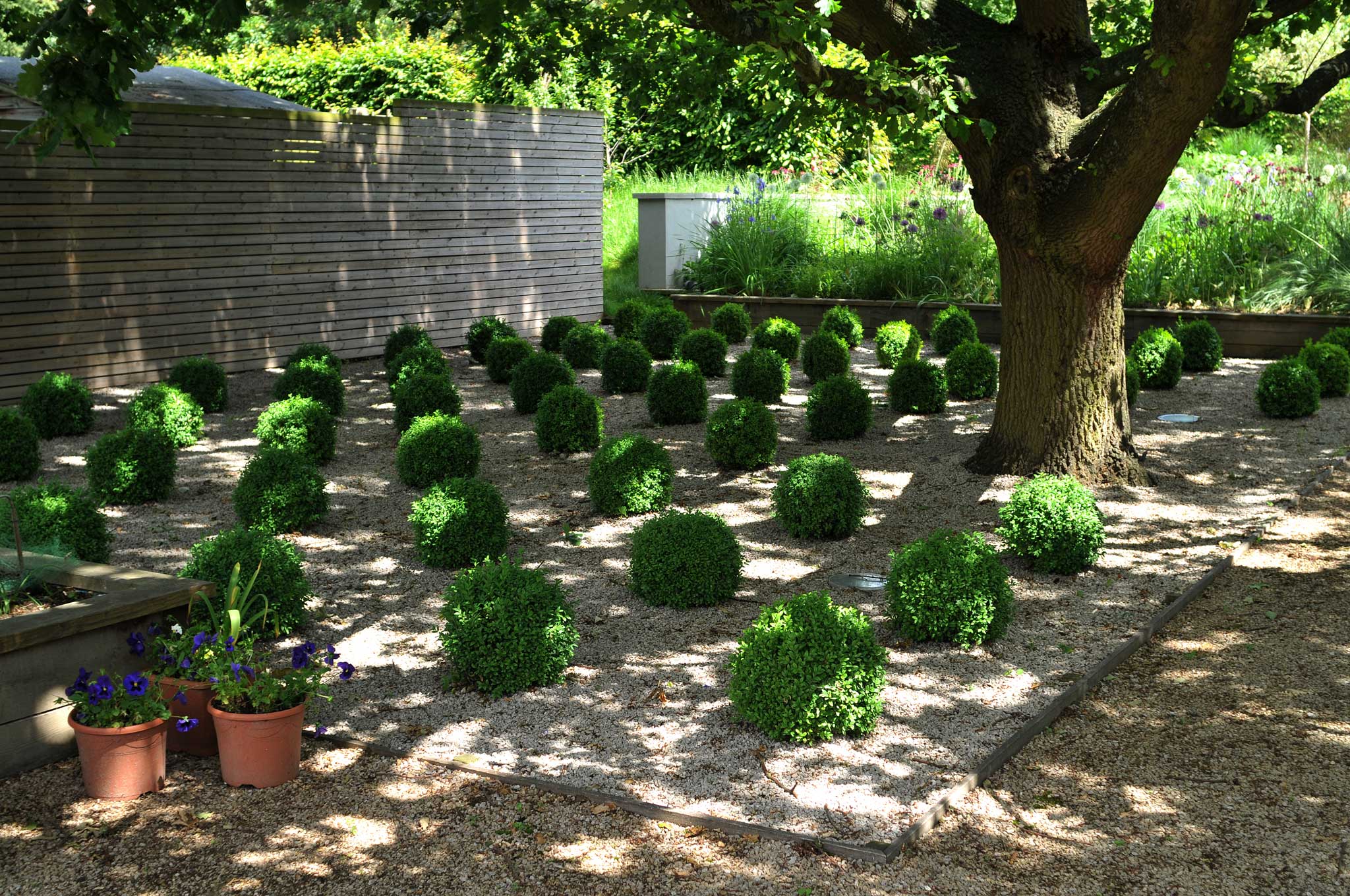Southern belle: Anna Pavord is bowled over by an ultra-modern, ingeniously landscaped plot
Helen Marsden is opening her garden in Dulwich Village tomorrow - and its quite the best thing of its kind our gardening correspondent has seen

I suppose if you do it every day, the ride out from London Bridge station to Dulwich loses its appeal. But the line, perched high on its embankment, gives you a terrific bird's-eye view down into the high streets and back yards of South Bermondsey and Peckham Rye, the buildings in late spring fudged by a frothy foreground of elderflower blossom and wild pink roses growing either side of the line.
Stepping out at North Dulwich station, enclosed in its cutting, with small hart's tongue ferns and ivy-leaved toadflax growing out of its high brick walls, you find a plant and pot nursery balanced, it seems, almost on the roof of the opposite platform.
But the greater surprise lies a little further away in Dulwich Village, where Helen Marsden is opening her garden tomorrow. Don't miss it. It is spectacular, superbly designed, uncompromisingly modern, quite the best thing of its kind that I have seen.
The house itself gives nothing away: a late Edwardian façade, red brick, set back from the road. But a grid of box balls in the corner of the front garden, set in gravel round a fine multi-stemmed katsura tree (Cercidiphyllum japonicum), gives a hint of what is to come.
I came into the garden from the house, the ideal way to appreciate how cleverly the one has been integrated with the other. Tomorrow, visitors will come in round the side of the house. Be firm. Turn immediately left and start your journey by the sliding doors of the glass extension that unites inside and out. Then you understand that, having been so radically modern in her treatment of the inside of the property, Helen had no alternative but to continue in the same mode outside.
For London, this is an unusually wide and generous plot – almost an acre – and the width is exaggerated by the handsome slate-lined pool set across the back of the glass extension. But you'll be looking at the two walls behind the pool, the lower one painted in brilliant fuchsia pink, the higher one behind in a slightly paler shade. If you are an admirer of the Mexican landscape architect, Luis Barragán, you'll know where that idea came from. Under our softer light and in the leafy setting of suburban London, you might not expect the translation to work. But it does – spectacularly well.
The walls, the pool, the terrace immediately outside the glass extension, are the work of the architect Helen used to transform the house. For a while, the rest of the garden remained untouched, as she tried to get planning permission to build another house in the grounds. That didn't happen, and now she is glad it didn't. The garden has become the most important part of the whole place.
For the design, she called in the landscape architect, Christopher Bradley-Hole. It was a brilliant choice. He has cleverly carved the sloping site into a series of wide, generous landings, each linked by an equally wide wooden step. A broad path of Breedon gravel leads up the centre, with raised wooden beds on either side, four pairs of them, handsomely constructed, one entirely devoted to asparagus, another to strawberries, others growing cabbages and sprouting broccoli, raspberries and herbs. "It's the greatest luxury," says Helen. "Just coming out here and picking stuff for supper."

The garden is dominated by a huge oak tree, with branches so wide it touches the boundaries on either side. It's just slightly off-centre, but Bradley-Hole turns this into a benefit rather than a problem, as his design leads your eye cleanly past the tree up to the leafy screen at the top of the garden. It doesn't block the long view and he uses it as a reason to reduce the width of the path for the rest of the journey up the garden. To the left, the area under the tree is gravelled and planted with a grid of box balls, nine by seven, harmonious, pleasing, and a clever way to deal with a potentially difficult area.
On the right are big square blocks of yew, the flat tops in the process of being sculpted. On the left, after the tree, are a parallel pair of borders, glowing quietly now in muted shades of purple and cream: alliums of course, Geranium phaeum, thistle-headed knautia, elegant stands of the tall grass, Stipa gigantea, all set among explosions of bronze fennel.
It's a wonderfully exciting garden, but calm too, part of the calmness coming from the quietly homogenous way the boundaries have been treated. Hornbeam hedges are used on both sides, taking over from slatted wooden panels, the slats rather narrow and running horizontally rather than vertically. On the right, between the boundary and the blocks of yew, a line of carefully-trimmed limes marches up the side of the garden, making a series of fine tall cones.
By the time you get to the top of the slope, you've had plenty of opportunity to take in all this. But nothing prepares you for the fact that at this point, the plot turns left in a sharp dogleg, revealing a new area as big as the one you've just moved through. Ahead is a beautifully tended lawn, bounded on both sides by hornbeam. At the end is a raised wooden deck, backed by the same horizontally-slatted panels that are used on the side boundaries. It is cool, calm and elegant. It has also, in the past, been a place for Helen's five children to play football.
Narrow paths lead through the hedges, giving glimpses of a grassy orchard squeezed in on the left-hand bank. On the far side, the hedges conceal another surprise, a path that winds through a little wood, bluebells, teasels and wild garlic under hawthorn and sloes. At the end is a hidden area, remarkably pleasing, with garden shed and compost bins. "Is there anything you would have done differently," I asked Helen, who has now lived with the garden for four years. "Not a thing," she replied. Nor would I.
Fairfield, 9 Dulwich Village, London SE21 7BU, is open tomorrow (2-5pm), £3.50, children free
Join our commenting forum
Join thought-provoking conversations, follow other Independent readers and see their replies
Comments
Bookmark popover
Removed from bookmarks